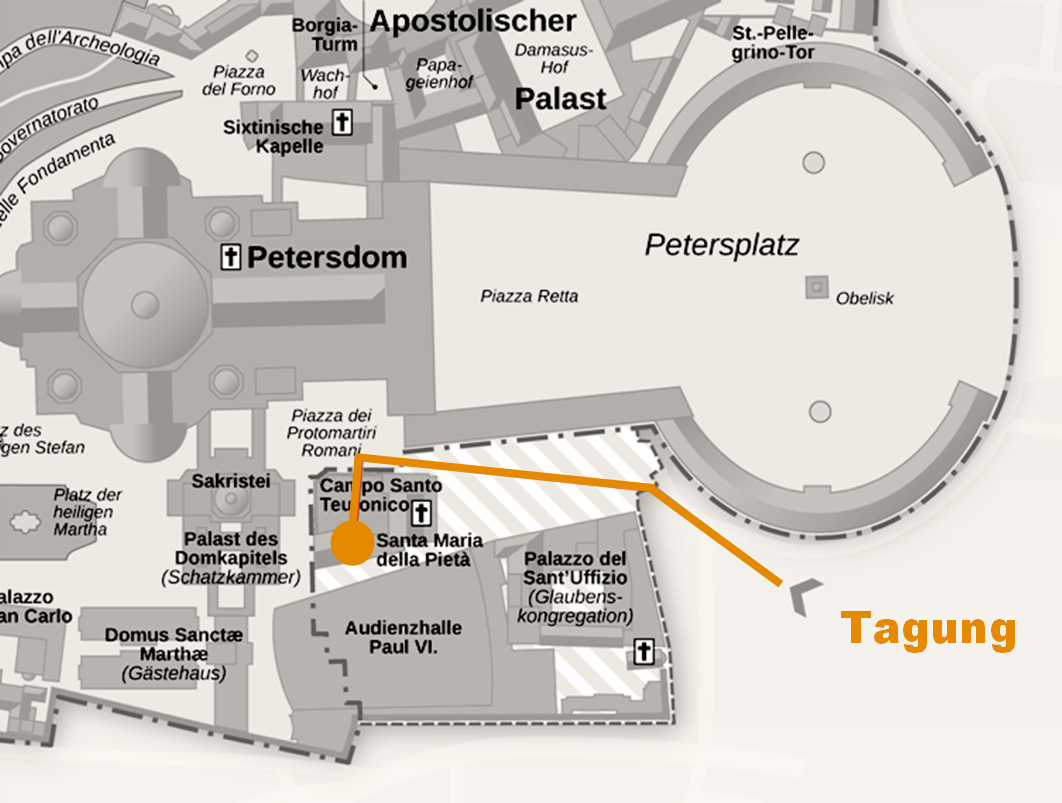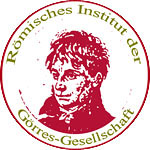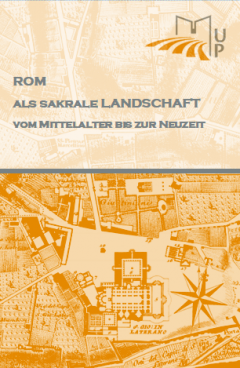23-25 March 2023: Conference "Rome as sacred topography from the Middle Ages to Modern Times"
- Datum: 2023-03-23
- Ort: Campo Santo Teutonico (Vatikan)
The Bavarian Regional History and European Regional History and the Church History and Christian Identities at the University of Passau are organising the conference in conjunction with the RIGG. Prof. Dr. Britta Kägler and Prof. Dr. Christian Handschuh are in charge.
The international conference will focus on Rome as a sacred topography from the Middle Ages to modern times. Sacred landscapes are not understood as the 'raw material' of topographical descriptions of places, such as infrastructures, but as their product. Rome will be regarded as a space of imagination, and the conference will ask what the Romans, but also visitors such as pilgrims, envoys, scholars or merchants, could know about the contemporary city of Rome from their own experience, from hearsay or from reading.
Specifically, we will be asking about the spatial conceptions within the sacred topography of Rome. The focus is on interrelations between macro- and micro-spaces within the Aurelian wall, but also on spaces of investigation for which Rome served as a model (Venice, Byzantium).
In a cross-epochal perspective, the individual contributions explore the questions of what the mental map of Rome or the comparative spaces looked like in the chosen period of study: Which central analytical differences can be identified as structuring or transforming? How does religion or sacrality manifest itself here? Which spatial figures can be used for interpretation?
Useful information
Organisers: Prof. Dr. Britta Kägler (Universität Passau), Prof. Dr. Christian Handschuh (Universität Passau) Time and location: 23-25 March 2023 at the seat of the Roman Institute of Christian Archaeology in the Vatican

Benefactors
- Universität Passau
- Benediktinerstift Admont
- Römisches Institut der Görres-Gesellschaft
Rom als sakrale Landschaft vom Mittelalter bis zur Neuzeit
15.30 Uhr Begrüßung und Einführung
Christian Handschuh / Britta Kägler (Passau)
16.00 Uhr Sascha Priester (München)
Alles Nero, oder was? Antike Monumente auf dem ager Vaticanus als Wegweiser christlicher Sakraltopographie
16.45 Uhr Stefan Heid (Rom)
Der Lateran und seine Satellitenkirchen oder Wie Reliquien Raum ergreifen
17.30 Uhr Pause
18.00 Uhr Leif Inge Petersen (Trondheim)
The Construction of a Sacred Landscape in Seventh-Century Rome between Byzantium, the Caliphate, the Avars and the Lombards
18.45 Uhr Bernward Schmidt (Eichstätt)
Sächsische Romanitas. Die Rolle Roms in antireformatorischen Netzwerken
20.00 Uhr gemeinsames Abendessen
9.30 Uhr Leonard Horsch (München)
quia sum in hac regione remotissima - Zentrum und Peripherie in den Briefen venezianischer Humanisten des Quattrocento
10.15 Uhr Adrian Bremenkamp (Rom)
Schon immer da? Die Neuinszenierung der Kreuzreliquie von Santa Croce in Gerusalemme in der römischen Sakraltopographie des 12./13. Jahrhunderts
11. 00 Uhr Pause
11.30 Uhr Britta Kägler (Passau)
Wirtschaftliche Aspekte sakraler Stadträume am Beispiel des Rione Ponte am Übergang zur Frühen Neuzeit
12.15 Uhr Eva-Maria Schreiner (Passau)
Hat keiner die Kuh vor dem Tempel gesehen? Touristische Topographien um 1700 am Beispiel des Campo Vaccino
13.00 Uhr Pause
14.45 Uhr Filip Malesevic (Fribourg)
Arkadien des Heils: Das Rom der Indexkongregation zwischen Kardinal Guglielmo Sirleto und Benito Arias Montano
15.30 Uhr Abschlussdiskussion
Vormittag: Exkursion
18.00 Uhr Öffentlicher Görres-Vortrag: Christian Handschuh (Passau)
Ein Hauch von Rom: Klostergründungen und Pilgerwege im Bistum Passau im 19. und 20. Jahrhundert
- Details
- Written by: Stefan Heid
- Category: Lectures and Conferences
 Römisches Institut der Görres-Gesellschaft
Römisches Institut der Görres-Gesellschaft







